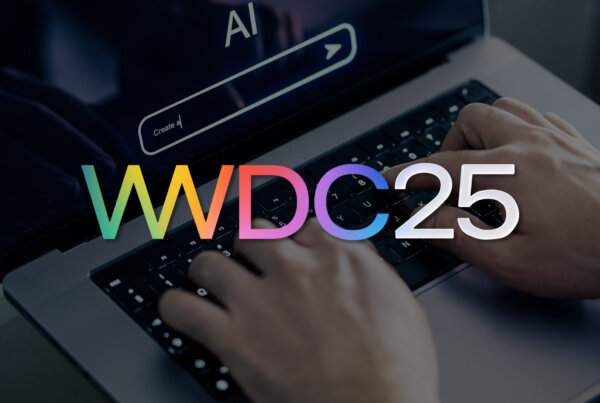Users get to self-regulate their own cookie jar
Have you ever seen one of those baking shows when the contestant mistakes salt for sugar, leaving judges with a bitter taste in their mouths as they toss ornately decorated cookies aside while spitting out crumbs? After all that hard work, the contestant can only blush with embarrassment and shake their head in disappointment. One can’t help but wonder what internal meetings and discussions were like at Google as they arrived at a final decision (announced on July 22) to deprecate their third-party cookie deprecation plan. For the many at Google who have worked on this initiative for years, the decision must’ve left a bitter taste. The same could be said for any organization that invested countless hours and resources integrating and testing Google Privacy Sandbox for web. To be clear, Google Privacy Sandbox isn’t being tossed aside, meaning all of the work to date isn’t in vain. However, Google is charting a new course on the future of third-party cookies.
There’s certainly no shortage of coverage about Google’s new path for Privacy Sandbox on the web. Kochava CEO Charles Manning discussed the shift with Ronan Shields and Seb Joseph at Digiday—his remarks landing as quote of the week in Digiday’s July 30 Marketing Briefing.


”
Both companies [Google and Apple] are avoiding direct responsibility for the decision of whether an identifier is present by making ‘consent’ the fulcrum of user choice and availability of the third-party cookie.
Charles Manning, CEO of mobile measurement business Kochava, when asked about Google’s latest cookie shift and how it compares to Apple’s moves
So… what happened—and why now?
Why Deprecate the Deprecation?
It’s clear that pressures were mounting on Google. No one ever said it would be easy to fill the void third-party cookies would leave behind. While third-party cookies have already been deprecated in Safari, Firefox, and other browsers, Chrome holds significant worldwide market share, and the advertising ecosystem that exists in its shadow is immense.
IAB Tech Lab’s fit gap analysis for Privacy Sandbox APIs provided a less-than-positive assessment earlier this year, drawing into serious question whether Sandbox was up to the task. Numerous podcasters have openly discussed the wrecking ball coming for open web publishers that relied on advertising for revenue and the unavoidable market cap wipeout that would ensue. Multiple analyses showed that Chrome users without cookies were monetizing far worse than users with cookies. The future of the open web and advertising was in doubt, with many surmising that premium ad dollars would all shift to the logged-in web, with a much smaller total addressable market (which may still happen at some level regardless).
”
We recognize this transition requires significant work by many participants and will have an impact on publishers, advertisers, and everyone involved in online advertising.
Anthony Chavez
VP, Privacy Sandbox, Google
Another major catalyst in the decision was almost certainly concerns arising from the UK’s Competition and Markets Authority (CMA), among other regulators and institutions. Further, Google was already embroiled in anticompetitive lawsuits with the US Department of Justice and multiple US states. The landmark decision in that case broke on August 5, with a ruling against Google from US District Judge Amit Mehta. How this ruling and the resulting remedy may impact Google’s next steps remains to be seen.
Bottom line: Google’s willingness to be open and collaborative with developers, publishers, advertisers, and regulators—and to make this shift in light of the momentum already behind deprecation—is something many are grateful for. The industry as a whole has more time and breathing room to find its way forward.
What’s Next for Third-Party Cookies & Google Privacy Sandbox?
Google is taking a partial page out of Apple’s AppTrackingTransparency (ATT) playbook—“elevating user choice.” While details aren’t yet “fully baked” (see what I did there?), Google plans to introduce new options in Chrome that give the consumer a choice as to how cross-site targeting and measurement apply to their browsing experience.

What exactly that prompt looks like, how prominent it is, and other details remain to be seen. Will the user have to make only one choice that applies to their total browsing activity across all sites? Will a day come when each publisher site has to prompt users individually, similar to how iOS apps do? Will it be opt out by default, or opt in? All these nuances will certainly impact what percentage of the billions of Chrome users worldwide can still be monetized through advertising levers using third-party cookie-like functionality.
What’s clear is that Google, like Apple, wants to distance itself from being the final arbiter over certain decisions—leaving the say in the hands of the consumer. A continued source of debate will be around how much power even this approach puts into the hands of Google and Apple as gatekeepers and to what extent the march toward privacy benefits owned-and-operated walled gardens at the sacrifice of smaller players.
In the meantime, Google will continue investing in Privacy Sandbox for web, seeking to further optimize it for both privacy and utility.
What This Means for Mobile Advertisers and Kochava
Kochava operates largely in the world of mobile app marketing, where third-party cookies do not play a major role in measurement and attribution. Nonetheless, a big question is how this shift on Google Privacy Sandbox for web impacts Google’s plans for Sandbox on Android.
Just as third-party cookie deprecation is being abandoned, will Google also ditch any plans for deprecation of the Google Ad ID (GAID), its mobile advertising device identifier? Will it follow in the footsteps of Apple and provide an app-level prompting mechanism that puts the final choice into the hands of the consumer? If so, the future may see a small universe of opted-in users on iOS with their identifier for advertisers (IDFA) intact and the same on Android with GAIDs. If the prompting and opt-in rates observed on iOS since April 2021 are any indication, the world of opted-in users will be a small one indeed.
”
I’m excited to see the continued support for third-party cookies and hope to see mobile ad identifiers follow a similar development path. I believe that by keeping these identifiers around, the industry will continue investing in privacy-enhancing technologies instead of being forced to fall back on less-transparent patterns of tracking due to aggressive timelines or limited visibility into campaign effectiveness.
It will be interesting to see how upfront the opt-in or opt-out controls are—with GDPR and other regulations, this experience is becoming the norm.
Ethan Lewis
CTO, Kochava
Stay Tuned
As I’ve been watching the 2024 Paris Olympics on Peacock, I’ve seen Apple’s latest privacy-focused commercial no fewer than five times. While it doesn’t mention Chrome by name, columnists have noted that it’s clear who it’s about. Apple wants to put a target on Google’s back related to privacy. For its part, Google is committed to charting a course with both consumers and adtech players in mind.
To stay up to date on all things adtech, subscribe to our newsletter.
Want to learn more about Google Privacy Sandbox for Android? Watch our on-demand Google Privacy Sandbox Webinars Part 1 and Part 2.





